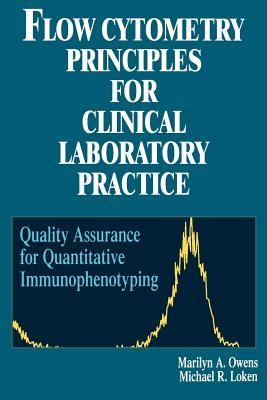
- We will send in 10–14 business days.
- Author: Owens
- Publisher: John Wiley & Sons
- ISBN-10: 0471021768
- ISBN-13: 9780471021766
- Format: 15.4 x 22.9 x 1.6 cm, minkšti viršeliai
- Language: English
- SAVE -10% with code: EXTRA
Reviews
Description
FLOW CYTOMETRY PRINCIPLES FOR CLINICAL LABORATORY PRACTICE
Quality Assurance for Quantitative Immunophenotyping Marilyn A. Owens and Michael R. Loken Flow Cytometry Principles for Clinical Laboratory Practice is aninvaluable benchtop reference and introduction for first-time usersof flow cytometry in clinical diagnostic laboratories. This manualprovides authoritative coverage of accepted methods, qualitycontrols, and standards for the cytometric analysis of clinicalsamples with particular relevance to CD4+ lymphocytes. CD4+lymphocyte determination by immunophenotyping is the standardmethod for evaluating the status of HIV infection, and the singlemost frequent application of flow cytometry in a diagnosticsetting. Flow Cytometry Principles for Clinical Laboratory Practice willappeal to clinical laboratory technologists, medical practitioners, and cytometry lab directors in their role as instructors of newpersonnel. In addition, it is a valuable resource for clinical andbiomedical researchers, establishing quantitative cytometricsystems for studies in immunology and hematology.EXTRA 10 % discount with code: EXTRA
The promotion ends in 21d.11:23:22
The discount code is valid when purchasing from 10 €. Discounts do not stack.
- Author: Owens
- Publisher: John Wiley & Sons
- ISBN-10: 0471021768
- ISBN-13: 9780471021766
- Format: 15.4 x 22.9 x 1.6 cm, minkšti viršeliai
- Language: English English
FLOW CYTOMETRY PRINCIPLES FOR CLINICAL LABORATORY PRACTICE
Quality Assurance for Quantitative Immunophenotyping Marilyn A. Owens and Michael R. Loken Flow Cytometry Principles for Clinical Laboratory Practice is aninvaluable benchtop reference and introduction for first-time usersof flow cytometry in clinical diagnostic laboratories. This manualprovides authoritative coverage of accepted methods, qualitycontrols, and standards for the cytometric analysis of clinicalsamples with particular relevance to CD4+ lymphocytes. CD4+lymphocyte determination by immunophenotyping is the standardmethod for evaluating the status of HIV infection, and the singlemost frequent application of flow cytometry in a diagnosticsetting. Flow Cytometry Principles for Clinical Laboratory Practice willappeal to clinical laboratory technologists, medical practitioners, and cytometry lab directors in their role as instructors of newpersonnel. In addition, it is a valuable resource for clinical andbiomedical researchers, establishing quantitative cytometricsystems for studies in immunology and hematology.

Reviews